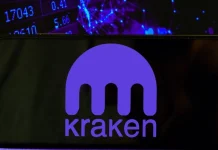
- Bitcoin Core’s first public audit confirms no critical issues and strengthens network trust.
- Audit targets P2P systems, mempool behavior, chain management, and core consensus rules.
- New fuzzing tools expand test coverage, improve detection depth, and reinforce security.
Bitcoin Core has cleared the first publicly disclosed, third-party security audit in its 16-year history, marking a defining moment for the software that anchors the Bitcoin network. The review, carried out by the security firm Quarkslab and funded by Brink with support from the Open Source Technology Improvement Fund (OSTIF), found no critical, high, or medium-severity vulnerabilities across the examined components. The results strengthen confidence in the resilience of the codebase while opening the door to new advances in testing and quality assurance.
A Landmark Audit for Bitcoin’s Most Important Software
Bitcoin Core is the primary implementation of the Bitcoin protocol and the engine behind most of the network’s nodes. Its reliability is central to the stability of an asset with a market value in the trillions. The project has long been reviewed internally, yet until now, it had never undergone a fully public evaluation by an external security team.
Bitcoin Core Passes First Public Audit With Quarkslab, Brink, and OSTIF (Source: X)
Quarkslab conducted the assessment between May and September, focusing on the most exposed part of the system: the peer-to-peer networking layer. This layer shapes how nodes exchange data, validate information, and communicate with the wider network. Because weaknesses here can ripple across the entire system, the review also included related components such as mempool management, chain state handling, consensus rules, and policy validation.
The engagement accounted for 100 man-days of structured analysis by Robin David, Nicolas Surbayrole, and Mihail Kirov, with technical support from engineers at Brink and Chaincode Labs. Their work combined manual review of key sections of the code with dynamic testing and deep fuzzing campaigns designed to push the software into uncommon or previously untested states.
Bitcoin Core: Methodology, Scope, and Key Findings
According to the report, Bitcoin Core contains more than 46,000 commits developed over 16 years. Due to its scale, reviewers and funders agreed to concentrate on targeted sections rather than the entire codebase.
The assessment followed three stages:
- Manual code analysis, paying particular attention to thread management and transaction handling
- Dynamic testing using Bitcoin Core’s established tooling
- Fuzzing campaigns, including structured, differential, and ensemble fuzzing approaches
The outcome:
- 16 findings in total
- 2 low-severity issues
- 14 informational notes and improvement suggestions
- No critical, high, or medium-risk vulnerabilities
The issues raised did not present any threat under Bitcoin Core’s security classification system, yet many of the recommendations improved clarity, safety, and long-term maintainability of the code.
Major Improvements in Fuzzing and Testing Infrastructure
One of the most impactful contributions from the review did not involve flaws in the code but rather the tools that test it. Quarkslab introduced new fuzzing harnesses for block-connection logic and chain reorganization scenarios, two areas where subtle bugs can create outsized consequences.
They also contributed:
- structured fuzzing harnesses using libprotobuf-mutator
- differential tests for cryptographic components
- a virtual filesystem to speed up state resets during fuzzing
- a Docker environment for ensemble fuzzing across multiple engines and
- an expanded test corpus to increase code coverage
These additions push test coverage into deeper and more complex areas of the code, including sections that had rarely been exercised in automated testing. The review also highlighted the promise of “snapshot fuzzing,” an ongoing effort from Brink aimed at probing chain state transitions that ordinary fuzzer runs cannot easily reach.
What the Audit Means for Bitcoin’s Security Future
The overall picture is straightforward: the software that anchors the Bitcoin network is in strong condition, and the sections most exposed to real-world threats show no signs of high-impact weaknesses. The audit also signals a new era for Bitcoin Core, one where external reviews become a normal part of securing the protocol rather than an occasional event.
Just as important, the audit enriched the project’s long-term security posture. By widening the scope and depth of fuzz testing and by suggesting changes that improve readability and reliability, the review left behind tools that will continue to benefit maintainers long after the assessment itself.
For a codebase that supports a global financial network, surviving a full public audit with no significant issues is noteworthy. The improvements introduced along the way may prove even more valuable, strengthening how the project identifies problems, tests new features, and safeguards the network’s most fundamental software.













